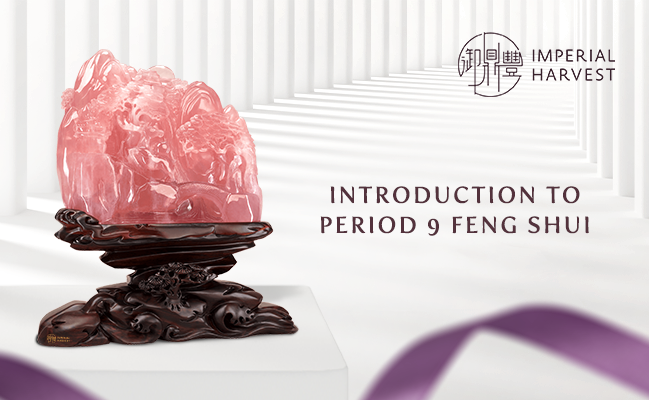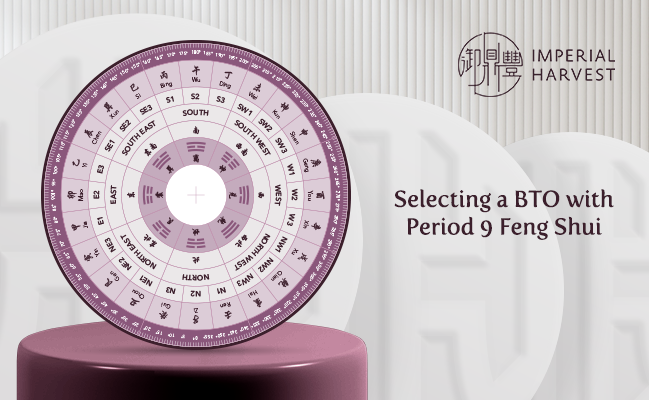

Posted by Imperial Harvest on 18 August 2023
How to Select the Best Location for Your Business with Feng Shui
Estimated Reading Time: 4 mins
Qi (气) is a central and fundamental concept within the practice of Feng Shui. It is defined as the dynamic energy that courses through the environment and engages with individuals on physical, mental, and spiritual levels. The primary aim of Feng Shui is to establish an environment that promotes an unimpeded flow of Qi energy, thereby attracting favourable outcomes for the occupants of that space.
Historical Development of Qi
During the Han dynasty (202 BC to 9 AD, 25 to 220 AD), specifically in the Donghan period, the scholar Wang Chong (王充) contributed to the evolution of the concept by characterising Qi as the energy circulating within the human body.
Subsequently, in the early Tang dynasty (618 to 690 AD), the scholar Lu Cai (吕才) further refined the prevailing interpretation of Qi. Lu Cai likened Qi to a natural phenomenon observed in the world, associating it with the energy emanating from tangible living entities like mountains and bodies of water. These conceptual shifts gained significant traction during the Ming dynasty when scholars recognised Qi energy as a natural substance governed by the laws of the environment. Consequently, it became regarded as a subject of scientific inquiry.
How does Qi flow affect Feng Shui?
The principle of Qi holds substantial importance within the framework of San He Feng Shui, a specific branch of the Feng Shui practice. The term, San He (三合) translates to “Three Harmony” in Chinese. This doctrine entails aligning the design and layout of a structure with the flow of Qi present in its surroundings. Moreover, it elaborates on the concept of Three Harmony in connection with the 12 Earthly Branches.
In the context of San He Feng Shui, Qi’s movement is characterised as an unceasing force that can only be slowed or obstructed. To facilitate the proper flow of Qi, barriers should extend directly from the ground and should not possess open spaces beneath them. Qi’s movement prioritises a downward flow, from higher ground to lower ground. Additionally, the availability of space plays a role, as Qi travels from smaller, confined areas to more expansive ones.
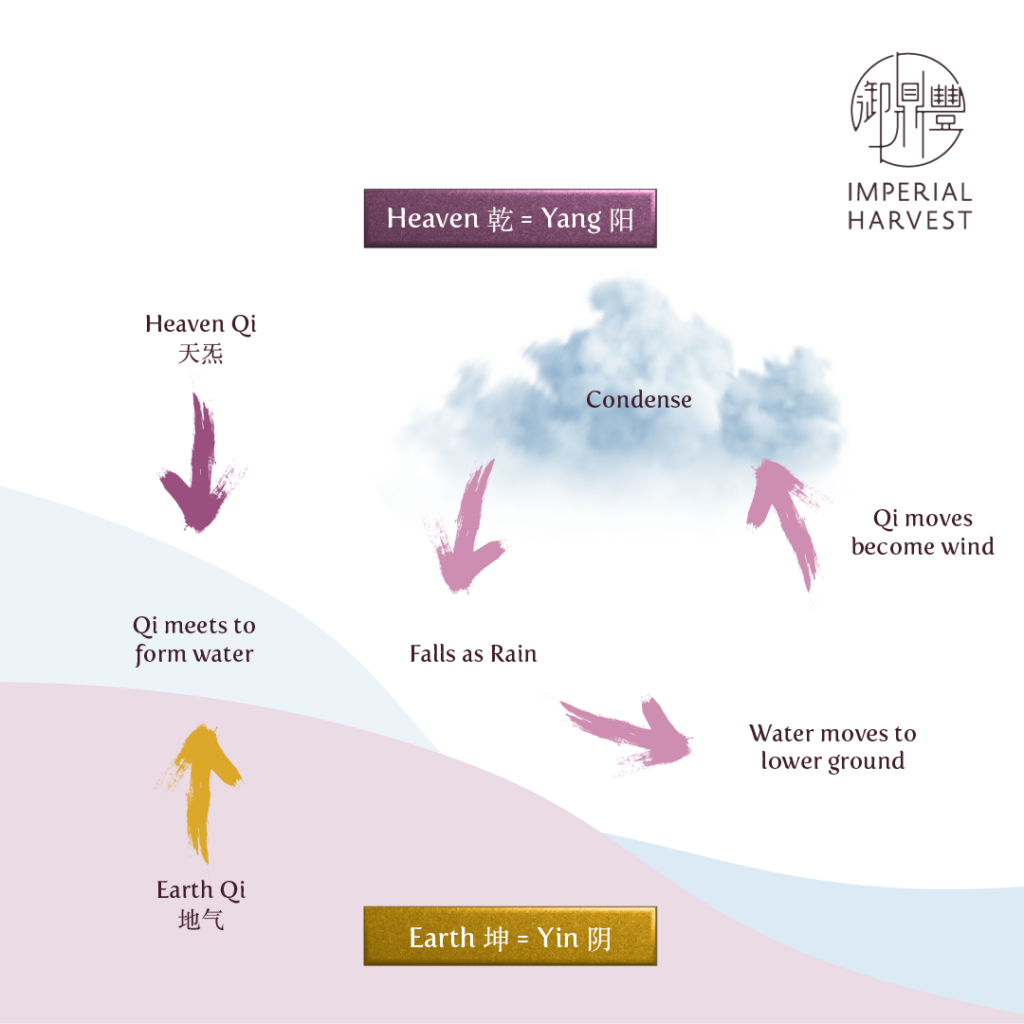
The central aim of San He Feng Shui involves ascertaining the direction of Yin or Yang flow by analysing the trajectory of Qi movement. This process is frequently accomplished through the identification of the closest river mouth.
River mouths are created by the convergence of two rivers and are recognised as the lowest points of the terrain — This prompts the natural movement of Qi to flow towards the water mouth and accumulate in that lowest point in the land. Positioned directly across from the river mouth, the highest elevated area is known as the incoming dragon.
When a bridge is situated over a river, it is acknowledged as a factor that maintains the pace of Qi flow. Consequently, the movement of energy within the influenced area is slowed. This phenomenon is considered auspicious within the context of San He Feng Shui, aligning with one of its objectives – to ensure a controlled Qi flow. Conversely, if the configuration of the river’s exit is confined by surrounding land formations, it is identified as a locked river mouth.
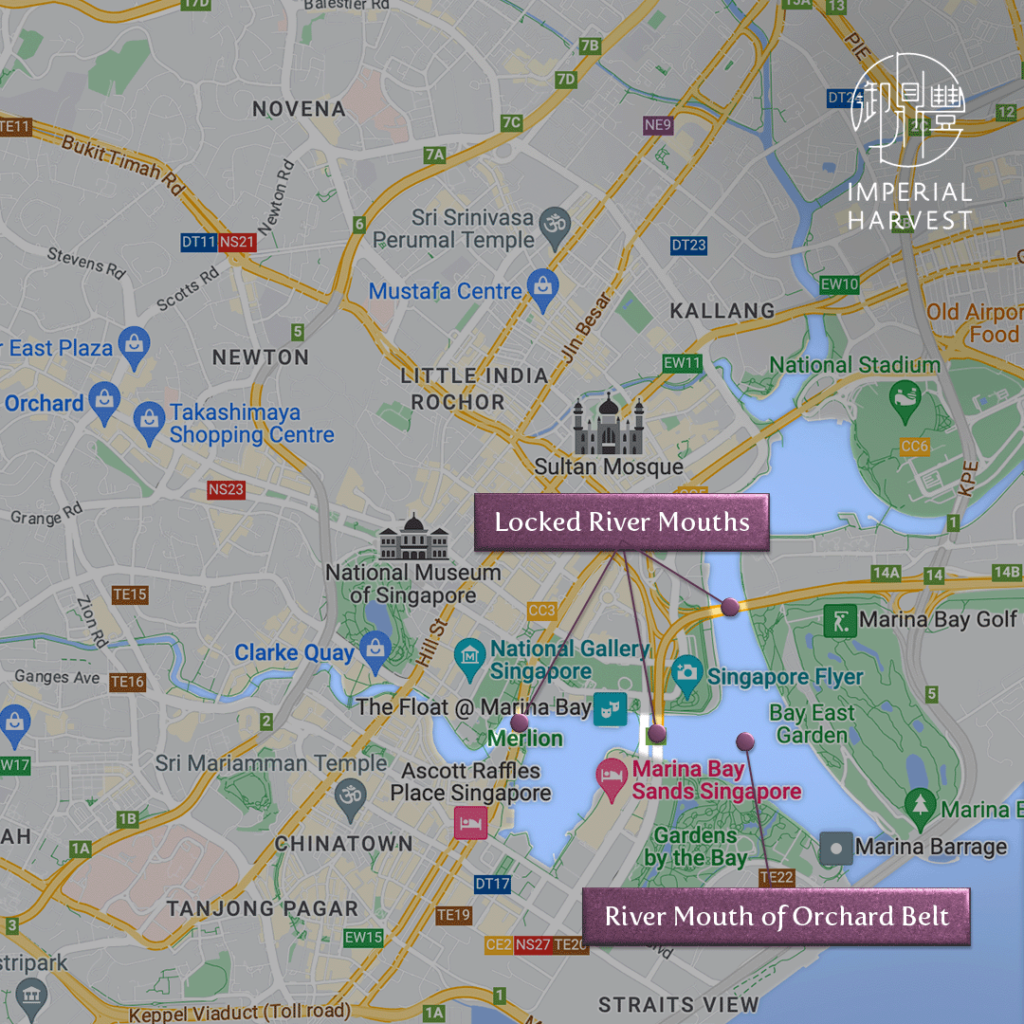
In this article, we will delve deeper into San He Feng Shui, exploring iconic locations to determine their strengths and weaknesses according to their flow of Qi.
Singapore River
For over two centuries, the Singapore River has served as a vital artery to the city, a historically significant waterway, it has played a pivotal role in the evolution of Singapore, transforming it from a trading outpost into a contemporary city-state.
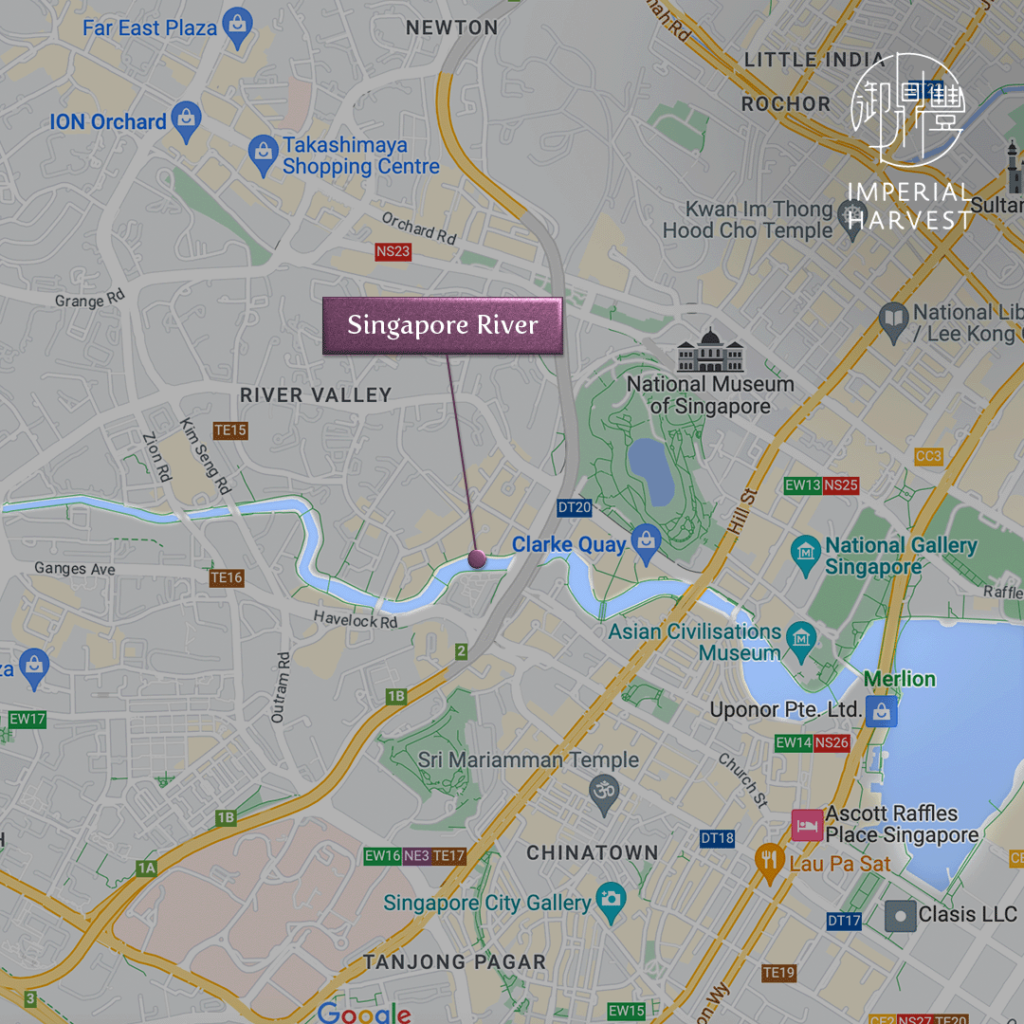
As the Singapore River and Kallang River converge into a water mouth, where Qi naturally flows towards the centre of Marina Bay. With the presence of many bridges such as the Cavanaugh Bridge, the Anderson Bridge, the Esplanade Bridge, and the Jubilee Bridge, the movement of energy is slowed, allowing the incoming Qi to move gently through the river — referred to as Incoming Dragon Qi — contributing to the prosperity of various businesses and attractions that line its banks.
Singapore Flyer
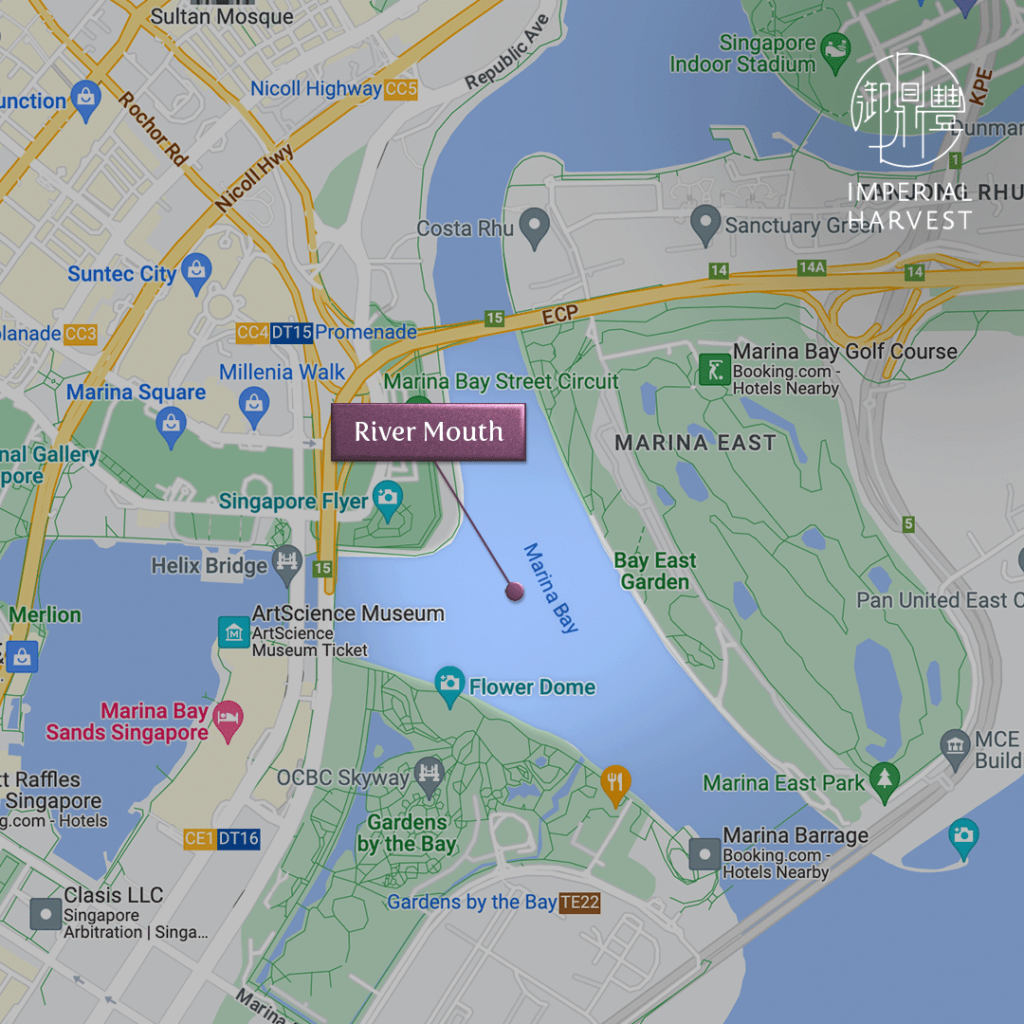
In the framework of San He Feng Shui, the nearest building to a water mouth is referred to as the Northern Guardian. This concept draws a parallel to the role of a security guard, as the Northern Guardian is considered responsible for shielding the entire area from adverse energy flows.
The position of the Northern Guardian is critical, as it receives the most energy from its surroundings and must adhere to specific structural principles to avoid unfavourable outcomes. A well-structured Northern Guardian building should possess a rear entrance oriented toward the water mouth, along with a front entrance directly opposite and parallel to the rear entrance. This design promotes the movement of Qi and facilitates the infusion of positive energy into the Northern Guardian.
In the case of the Singapore Flyer, its encompassing convex structure, including the rotating wheel, deviates from the principles of San He Feng Shui. Furthermore, the building’s entrances and exits are situated contrary to the recommended orientations. In light of these factors, practitioners of San He Feng Shui have observed that the Singapore Flyer appears to attract negative energy from its surroundings, which could hinder its prospects for prosperity.
Raffles City in Chongqing, China
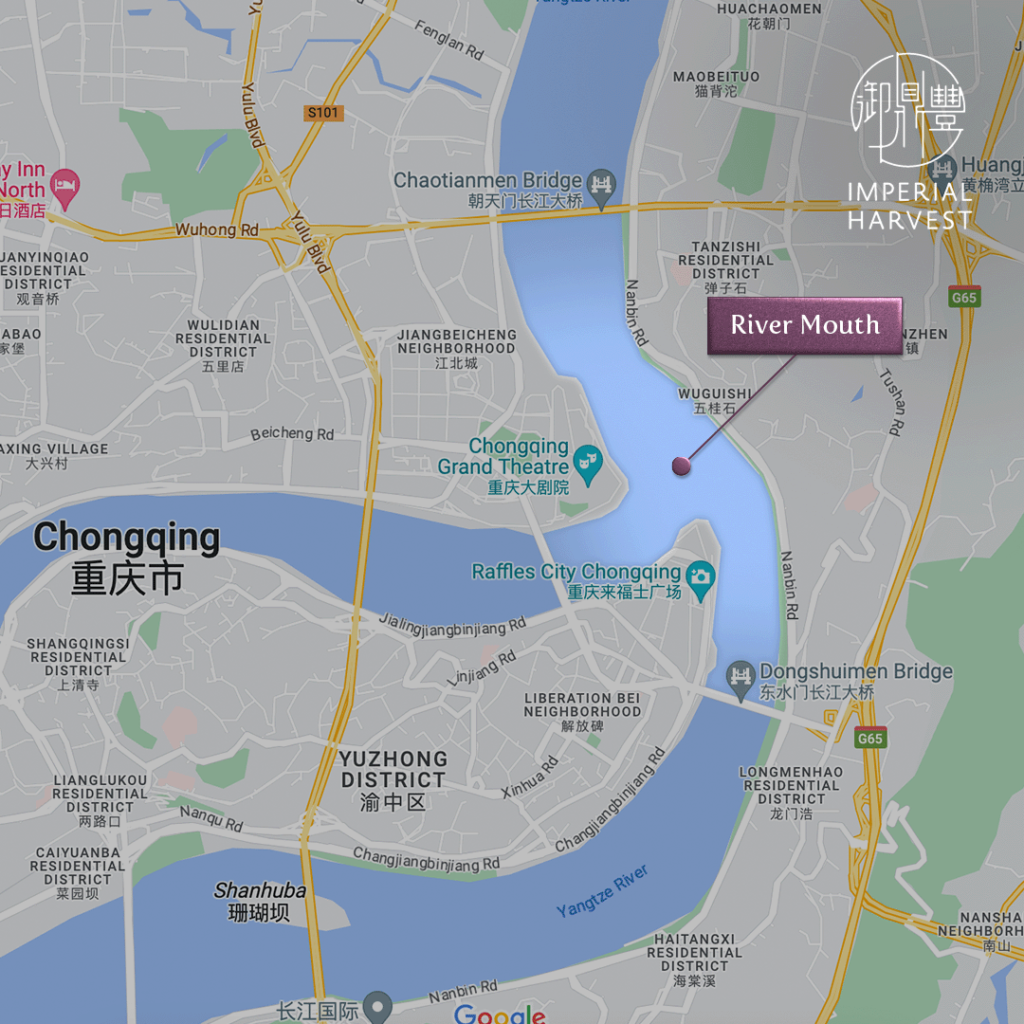
In contrast to the Singapore Flyer, the Raffles City development located in Chongqing functions as the Northern Guardian, in relation to the convergence of the Yangtze and Jialing Rivers’ water mouths.
This water mouth is further constrained downstream by the presence of the Chao Tian Men bridge, and its flow is notably influenced by the numerous bridges interlinking the Yuzhong district with Jiangbei and Nan’an districts. The architectural design of the Raffles City complex strategically incorporates features for optimal Feng Shui influence.
The complex employs a configuration that encompasses a receptive structure facing its front and an outward-pushing structure oriented toward its back, directed towards the water mouth. This deliberate layout enables the complex to effectively absorb and harness energy from its immediate surroundings, channelling this energy directly into the building and ultimately towards the water mouth. As a result of this harmonious alignment, the Raffles City complex experiences heightened foot traffic and attracts high-spending individuals, contributing to its vibrancy and commercial success.
Imperial Harvest’s expert consultants are always on hand to guide you on your journey and provide you with insights to help you realise your fullest potential. Book a complimentary consultation today or contact us at +65 92301640.
We are located at
For prospective clients: Imperial Harvest402 Orchard Road
Delfi Orchard #02-07/08
Singapore 238876 For existing clients: Imperial Harvest Prestige
402 Orchard Road
Delfi Orchard #03-24/25
Singapore 238876
Most Read Articles
Get to read our life changing articles and get inspired.
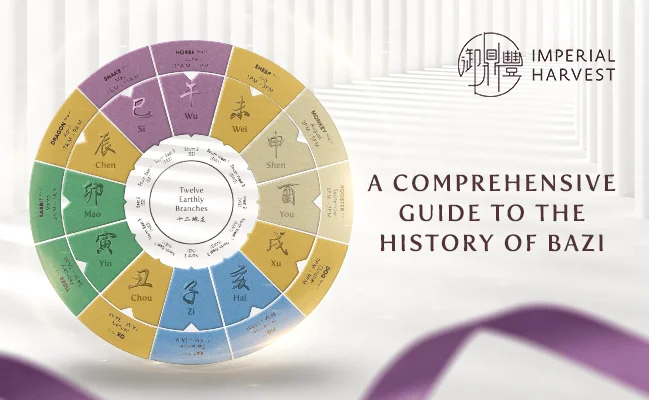
A Comprehensive Guide to the History of Bazi (八字)
Estimated Reading Time: 5 mins Bazi (八字) is often mistakenly assumed as the Chinese counterpart of western Astrology. The similarities between both systems lie in their utilisation of birth dates and time in their calculations, and the ability to be read from a tabulated chart. Where Astrology may take into account the positions of different […]

Imperial Harvest Consecration Ceremony
Estimated Reading Time: 5 mins At Imperial Harvest, each earthly treasure undergoes a series of consecration rites performed by Master David, before it is bestowed upon its blessed owner. Every aspect of these sacred Chinese anointing rituals is carefully examined and accurately represented in Master David’s blessings, reflecting Imperial Harvest’s deep respect for these esteemed […]
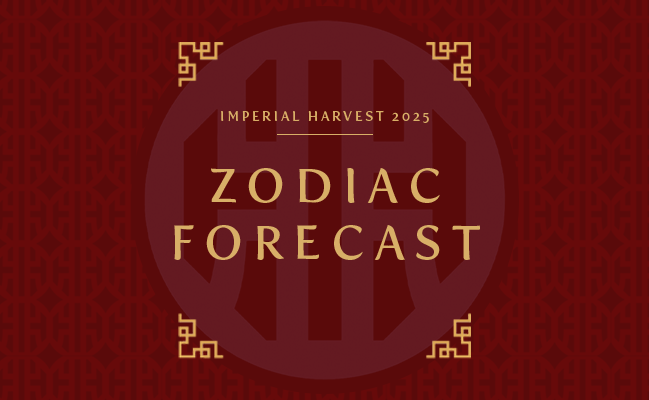
Imperial Harvest 2025 Zodiac Forecast
Estimated Reading Time: 7 mins The Year of the Wood Snake in 2025 brings a dynamic period of growth, transformation, and new beginnings. With its ambitious qualities, the Wood Snake’s influence offers unique opportunities for those who seek progress and renewal. Drawing from the time-honoured principles of Imperial Feng Shui, the Imperial Harvest 2025 Zodiac […]

